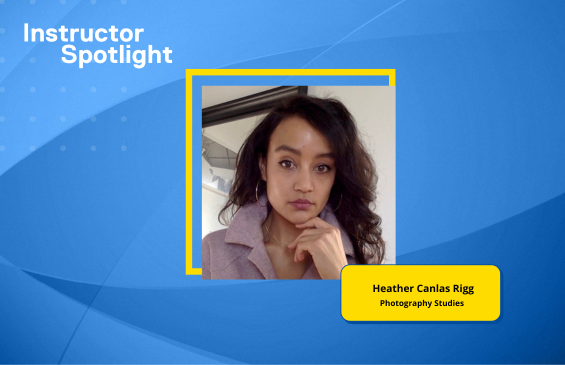Photography Instructor Named Artistic Director for Renowned Photography Festival
April 26, 2023
Photography Studies Instructor Heather Canlas Rigg was recently announced as the new Artistic Director for the Scotiabank Contact Photography Festival, which runs from April 28 through May 31, 2023.
Canlas Rigg co-teaches CDPF 905 Contemporary Art Photography, a course that is part of the Certificate in Photography Studies at The Chang School. We sat down with her to talk about her background and how she got into curating, how new technology is impacting photography, and tips for photography students to network. Read on to find out more.
CS: Tell us about your background and how you got into curating.
My interest in art and curating really stems from the art history classes I took during my undergraduate studies. I loved learning about the trajectory of our socio-political contexts through art: it provided historical context, and importantly, how artists were, and are, responding.
I completed the Film and Photography Preservation and Collections Management Masters program at Toronto Metropolitan University, which gave me an in-depth knowledge of the history of photography and working with photographic objects and collections. I was really interested in contemporary art and curating, and would see as many exhibitions as I could. I volunteered for the Scotiabank Contact Photography Festival many years ago, which led me to start working for the previous Artistic Director. There, I learned a lot about managing exhibitions, curating, and programming.
I began writing about art and curating my own projects, and later started a curatorial collective called, ma ma with Curator, Writer, and Researcher Magdalyn Asimakis. While my broader curatorial practice does include all mediums, lens-based work, which is made from camera technology, is at the heart of what I do.
CS: How do you bring your expertise in photography curation to the Contemporary Art Photography course that you teach at The Chang School?
HCR: I share a lot of insight into curating and putting exhibitions together. We talk about why you see different kinds of exhibitions in different spaces due to mandates, audiences, and budgets, as well as other factors.
It's great to be able to share this information with students and to do gallery visits with them – that way we can talk about the institutions we visit, and we can share our responses to exhibitions we have all seen. This really complements the certificate, which gives students a lot of space to learn the technical sides of taking photographs and the history of photography.
CS: How is technology changing the field of photography?
HCR: Developments in technology are always changing the ways that camera technology is used and how we view and see images. Artists are great at using new technology and media in surprising and poetic ways. Artificial intelligence (AI) is being explored extensively right now, and there is a lot of great work being made with what was recently considered new technology but is now ubiquitous, such as drone camera footage, 3D modeling software, and printing.
CS: As you are also active in the photography industry, including the Contact Festival, does that help students to network? How so?
I encourage students to submit their work to all open calls as well as to reach out to artists, photographers, or curators they admire or want to work with (even just for a coffee to connect). I always recommend joining Gallery 44's membership program, which provides access to photographic facilities and is a great photo and contemporary art community to be a part of.
Visiting galleries is a great way to see art, meet the folks who work there, and discover the artists they show. I find the more looking, seeing and feeling, the better – these are muscles we all need to work.
I also like asking photographic artists to come in as guest speakers – it's great when they can share how they transitioned into working with photography and art full time.
Because the class I teach is co-taught, the other instructors have different wells of knowledge that students can access, and therefore people they could be introduced to – whether it's just learning about an artist, or a curator who may be interested in their work, or a commercial photographer who is looking for assistants.
CS: What aspect of photography and curation inspires you most and why?
HCR: In terms of art, I love seeing the ways in which artists transform images into something else. Curating excites me because of the conversations that can be created by placing artworks in dialogue with one another; especially when it's done in surprising and or innovative ways. I like being able to work closely with an artist, creating space for them to push their practice in new directions. I love it when someone is moved by an exhibition, or goes to see a show more than once!

